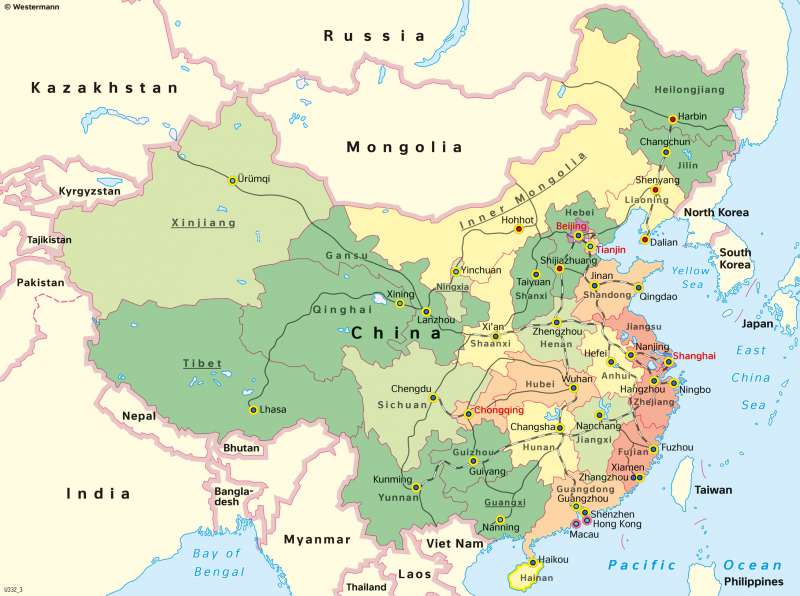China - Regional development
Economy and regional development
978-3-14-100890-6 | Page 125 | Ill. 3

Overview
China's impressive economic development began after the death of Mao Zedong. In 1978, under the leadership of Deng Xiaoping, a reform course was initiated that ended the previous policy of economic isolation. In the initial phase, the reforms for the "socialist modernisation of the economy" were largely limited to agriculture, later they were rapidly extended to industry and services.
Special economic zones and open cities were gradually established along the east coast, where the settlement of foreign companies was supported and therefore particularly easy. They offered foreign investors the opportunity to invest under different economic laws than in the rest of China and to produce for export under world market conditions, taking advantage of low wages. The economic boom provided further strong development impulses in the coastal regions. Later, open cities and special economic zones were also extended to certain inland cities.
The Chinese economy today
In the present, China is increasingly succeeding in leaving behind its role as the world's "workbench". Investments in education, research and development are just as important as the establishment of modern growing industries and services. Export orientation is increasingly being joined by the growing domestic market. As a result, eastern China is now one of the regions of the world with the fastest-growing economies and - despite some structural problems - one of the regions with the most modern economic structure. As a result, GDP per capita in the coastal region is above average in many places.
While the booming cities stretch along China's south and east coasts, the regions in central, western and northern China have significantly below-average GDP per capita and lag behind in development. As a result, people from these areas are increasingly pushing into the coastal provinces to participate in the economic boom as migrant workers.
In order to counteract the East-West development gap, projects for the economic development of the rest of the country have been started since the end of the 1990s. Through massive investments, for example, the city of Chongqing - administratively equal to a province and therefore comparable in status to Beijing or Shanghai - is being developed into an economic centre that is increasingly becoming the starting point for the economic development of West China. With projects such as the "Western China Development Plan" or the construction of railway lines, the central government is trying to steer investors into areas that have received little attention so far, and thus connect to economic development in the east.




